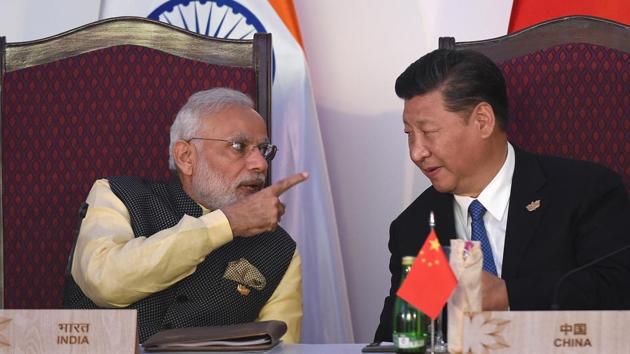At the heart of Doklam standoff is China’s attempts to drive wedge into Indo-Bhutan ties
On the Doklam standoff, China has been silent on a 2012 understanding with India which says that changing the status quo of tri-junctions require consent of third countries, in this case Bhutan.
Prime Minister Narendra Modi will travel to China to attend a BRICS summit early September, with the possibility of an ongoing military standoff between the Asian giants overshadowing the crucial meeting of the five-nation grouping.

The meeting of the heads of Brazil, Russia, India, China and South Africa (BRICS) also comes against the backdrop of a slide in ties between the two countries – mainly over the Communist nation blocking India’s entry into the nuclear suppliers group, Beijing’s continued refusal to tag Jaish-e-Mohammed chief Masood Azhar a terrorist and New Delhi boycotting President Xi Jingping’s signature One Belt One Road project (OBOR).
The standoff at Doklam, at the India-Bhutan-Tibet tri-junction, has already entered the second month, the longest face-off between the neighbours who are used to border skirmishes.
The last time Modi and Xi met, at Astana in June on the sidelines of a multi-lateral summit, they had agreed not to let differences become disputes. But as they meet again, the two leaders will need more than a reiteration of this turn of phrase to take the ties back on track.
Though both countries are engaged in negotiations, none is putting a deadline to sort out the dispute at Doklam, which erupted on June 16 after China accused Indian troops of entering its territory.
Also there is no indication from China whether it would support India’s bid to bring Azhar under the United Nations sanctions list, something the NDA government gives top priority to and egging China on for long.
“We will keep patience to resolve the (Doklam) issue. We will keep engaging with China to resolve the dispute,” external affairs minister Sushma Swaraj said in Rajya Sabha on Thursday, a day after Beijing issued a 15-page document which it termed a fact sheet of the face-off.
Though the Chinese statement was a firm and forceful reiteration of what Bejing has been saying, it gives space for finding a solution through talks. But the lessons from the standoff show why Modi would have to look at a new template in dealing with China.
Firstly, China has been more assertive over Doklam standoff than they had been in recent times. Second, and more importantly, Beijing has challenged India’s special relationship with Bhutan.
For New Delhi, the dispute is on Bhutan territory and Indian troops went in under an understanding with the Himalayan kingdom, to stop China from constructing a road. That is the reason for India’s measured statements compared to the shrill rhetoric from China – from ‘withdraw troops and talk’ to veiled threats of a war.
The Chinese notably didn’t take note of an argument India made as to why it is concerned about the standoff. Under a 2012 understanding between India and China on border issues, changing the status quo of tri-junctions require consent of third countries involved. In this case, the third country is Bhutan and what bolsters the Indian argument is that Bhutan lodged a diplomatic protest with China.
Instead, China has quoted liberally from the 1890 treaty between Great Britain and China to buttress its claim. The Chinese foreign ministry on Wednesday mentioned a “non-paper” provided by the Indian side during a meeting of the special representatives on the boundary issue on May 10, 2006. According to Beijing, the two sides had agreed to the boundary alignment in the Sikkim sector under the 1890 treaty.
At the heart of this entire standoff is Beijing challenging India’s special relationship with Bhutan. A Chinese foreign ministry statement on Thursday puts emphasis that Beijing and Thimphu conducted joint surveys in the border area and have reached a “basic consensus on the actual state of the border area and the alignment of their boundary”.
Which, in other words, mean they are close to actual delimitation of the border, a result of 24-rounds of China-Bhutan boundary talks.
“The China-Bhutan boundary issue is one between China and Bhutan. It has nothing to do with India. As a third party, India has no right to interfere in or impede the boundary talks between China and Bhutan, still less the right to make territorial claims on Bhutan’s behalf,” the Chinese foreign ministry said.
That is opening another front, a sensitive one for India. After an initial protest, Bhutan hasn’t made any statement on the standoff. And any move to alter Indo-Bhutan ties would be of great challenge to New Delhi.





